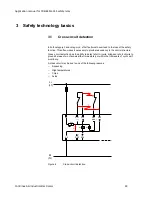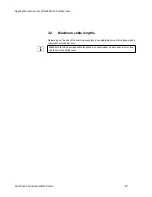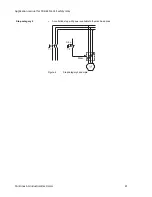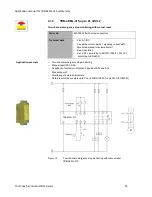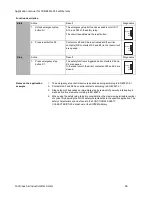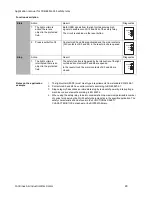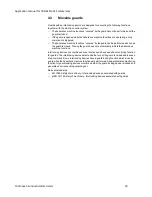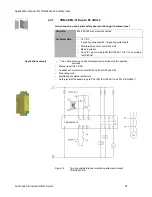
Application manual for YRB-4EML-31S safety relay
Contrinex AG Industrial Electronics
16
2.3.4
Determination of the achieved safety integrity for the entire
SRECS
To determine the achieved safety integrity level, the PFH
d
values of the individual
subsystems must now be added together. The result must lie within the SIL required for the
safety function.
Table 2
Determination of the safety integrity level (according to EN 62061)
Safety
integrity level
Probability of a dangerous failure per hour (PFH
D
)
3
≥ 10
-8
to < 10
-7
2
≥ 10
-7
to < 10
-6
1
≥ 10
-6
to < 10
-5
Furthermore, the SIL CL of an individual subsystem determines the maximum achievable
SIL for the SRECS. For safety components with integrated diagnostics, this is provided by
the manufacturer. For subsystems consisting of discrete components, this value must be
determined using the table below.
Table 3
Determination of the safety integrity level for a subsystem with discrete
components (according to EN 62061)
Safe failure fraction
Hardware fault tolerance
1)
0
1
2
< 60%
Not permitted
2)
SIL 1
SIL 2
60% to < 90%
SIL 1
SIL 2
SIL 3
90% to < 99%
SIL 2
SIL 3
SIL 3
≥ 99%
SIL 3
SIL 3
SIL 3
1)
A hardware fault tolerance of N means that N + 1 faults can lead to a loss of the SRCF.
2)
See EN ISO 62061, Section 6.7.7
2.3.5 Verification of the achieved SIL
Each individual subsystem and the entire safety chain must both meet the requirements of
the necessary SIL. This includes both the quantitative evaluation and the consideration of
systematic aspects.
The systematic aspects include:
– Correct dimensioning of components
– Consideration of expected operating conditions and ambient conditions
– Use of basic and proven safety principles
– Avoidance of specification errors and software errors through testing

















